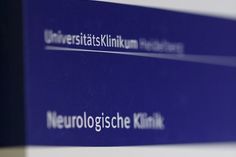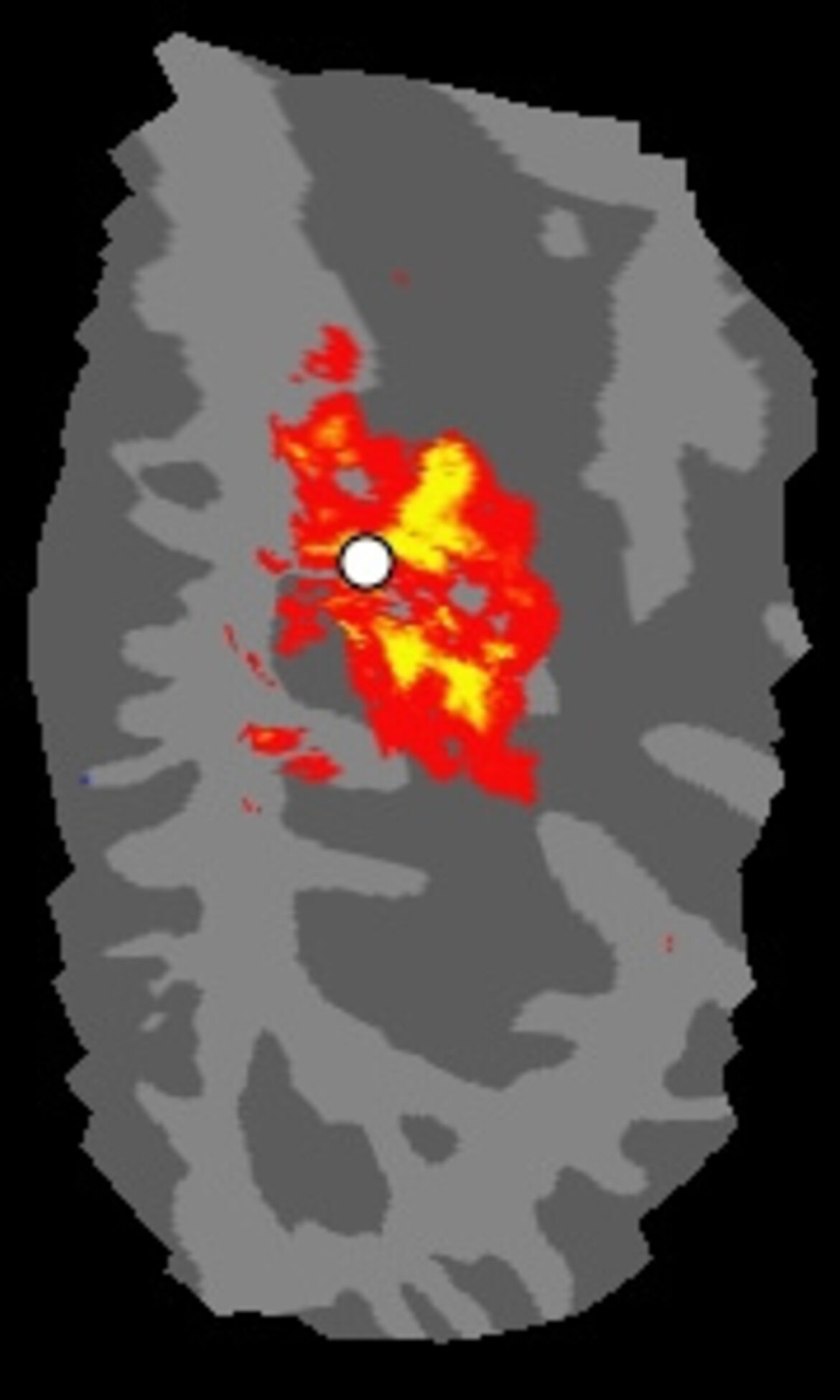Auditory Cognition Lab
Veröffentlichungen
2018
Starzynski C, Gutschalk A (2018) Context-dependent role of selective attention for change detection in multi-speaker scenes. Hum. Brain Mapp., in press.
Wiegand K, Heiland S, Uhlig CH, Dykstra AR, Gutschalk A (2018) Cortical networks for auditory detection with and without informational masking: Task effects and implications for conscious perception. Neuroimage, 167:178-190.
2017
Prilop L, Gutschalk A (2017) Auditory-cortex lesions impair contralateral tone-pattern detection under informational masking. Cortex, 95:1-14.
Uhlig CH, Gutschalk A (2017) Transient human auditory cortex activation during volitional attention shifting. PLOS ONE, 12:e0172907.
Hausfeld L, Gutschalk A, Formisano E, Riecke (2017) Effects of cross-modal asynchrony on informational masking in human auditory cortex. J. Cogn. Neurosci., 29:980-990.
Dykstra AR, Cariani P, Gutschalk A (2017) A roadmap for conscious audition and its neural underpinnings. Philos. Trans. R. Soc. Lond. B. Biol. Sci., 372:20160103.
2016
Dykstra AR, Halgren E, Gutschalk A, Eskandar EN, Cash SS (2016) Neural correlates of auditory perceptual awareness and release from informational masking recorded directly from human cortex: a case study. Front. Neurosci., 10:472.
Dykstra AR, Burchard D, Starzynski C, Riedel H, Rupp A, Gutschalk A (2016) Lateralization and binaural interaction of middle-latency and late-brainstem components of the auditory evoked response. JARO, 17:357-370.
Uhlig CH, Dykstra AR, Gutschalk A (2016) Functional magnetic resonance imaging confirms forward suppression for rapidly alternating sounds in human auditory cortex but not in the inferior colliculus. Hear. Res., 335:25-32.
2015
Dykstra AR, Gutschalk A (2015) Does the mismatch negativity operate on a consciously accessible memory trace? Sci. Adv. 1:e1500677 (pdf)
Gutschalk A, Uppenkamp S, Riedel B, Bartsch A, Brandt T, Vogt-Schaden M (2015) Pure word deafness with auditory object agnosia after bilateral lesion of the superior temporal sulcus. Cortex, 73:24-35.
Gutschalk A, Rupp A, Dykstra AR (2015) Interaction of streaming and attention in human auditory cortex. PLOS ONE 10:e0118962. (pdf)
Gutschalk A & Dykstra A (2015) Auditory neglect and related disorders. In: Celesia GG, Hickok GS (Eds) The human auditory system: fundamental organization and clinical disorders. Volume 129: The Handbook of Clinical Neurology, 3rd Series (series eds: Aminoff M, Boller F, Swaab D), Elsevier, pp 557-571.
Gutschalk A & Steinmann I (2015) Stimulus dependence of contralateral dominance in human auditory cortex. Hum. Brain Mapp., 36:883-896.
2014
Riecke L, Scharke W, Valente G, Gutschalk A (2014) Sustained selective attention to competing amplitude-modulations in human auditory cortex. PLoS One, 9:e108045.
Gutschalk A (2014) MEG auditory research. In Supek S, Aine CJ (Eds) Magnetoencephalography – From Signals to Dynamic Cortical Networks. Springer, Heidelberg, pp. 679-712.
Gutschalk A & Dykstra AR (2014) Functional imaging of auditory scene analysis. Hear. Res., 307:98-110. (pdf)
2013
Dykstra AR & Gutschalk A (2013) Time is of the essence for auditory scene analysis. eLife, 2:e01136. (pdf)
Shaw ME, Hämäläinen MS, Gutschalk A (2013) How anatomical asymmetry of human auditory cortex can lead to a rightward bias in auditory evoked fields. NeuroImage, 74:22-29.
Carl D & Gutschalk A (2013) Role of pattern, regularity, and silent intervals in auditory stream segregation based on inter-aural time differences. Exp. Brain Res., 224:557-570.
2012
Königs L & Gutschalk A (2012) Functional lateralization in auditory cortex under informational masking and in silence. Eur. J. Neurosci., 36:3283-3290.
Steinmann I & Gutschalk A (2012) Sustained BOLD and theta activity in auditory cortex are related to slow stimulus fluctuations rather than to pitch. J. Neurophysiol., 107:3458-3467. (pdf)
Wiegand K & Gutschalk A (2012) Correlates of perceptual awareness in human primary auditory cortex revealed by an informational masking experiment. NeuroImage, 61:62-69.
Gutschalk A, Brandt T, Bartsch A, Jansen C (2012) Comparison of auditory deficits associated with neglect and auditory cortex lesions. Neuropsychologia, 50:926-938.
2011
Hug A, Bartsch A, Gutschalk A (2011) Voices behind the left shoulder: two patients with right-sided temporal lobe epilepsy. J. Neurol. Sci., 305:143-146.
Schadwinkel S & Gutschalk A (2011) Transient BOLD activity locked to perceptual reversals of auditory streaming in human auditory cortex and inferior colliculus. J. Neurophysiol., 105:1977-1983. (pdf)
Gutschalk A & Uppenkamp S (2011) Sustained responses for pitch and vowels map to similar sites in human auditory cortex. NeuroImage, 56:1578-1587.
Steinmann I & Gutschalk A (2011) Potential fMRI correlates of 40-Hz phase locking in primary auditory cortex, thalamus and midbrain. NeuroImage, 54:495-504.
2010
Schadwinkel S & Gutschalk A (2010) Functional dissociation of transient and sustained fMRI BOLD components in human auditory cortex revealed with a streaming paradigm based on interaural time differences. Eur. J. Neurosci., 32:1970-1978.
Schadwinkel S & Gutschalk A (2010) Activity associated with stream segregation in human auditory cortex is similar for spatial and pitch cues. Cereb. Cortex, 20:2863-2873. (pdf)
Gutschalk A, Hämäläinen MS, Melcher JR (2010) BOLD responses in human auditory cortex are more closely related to transient MEG responses than sustained ones. J. Neurophysiol., 103:2015-2026. (pdf)
Kretzschmar B & Gutschalk A (2010) A sustained deviance response evoked by the auditory oddball paradigm. Clin. Neurophysiol., 121:524-532.
2009
Gutschalk A, Oldermann K, Rupp A (2009) Rate perception and the auditory 40-Hz steady-state fields evoked by two-tone sequences. Hear. Res., 257:83-92.
Englisch S, Esslinger C, Inta D, Weinbrenner A, Peus V, Gutschalk A, Schirmbeck F, Zink M (2009) Clozapine-induced obsessive-compulsive syndromes improve in combination with aripiprazole. Clin. Neuropharmacol., 32:227-229.
2008
Gutschalk A, Micheyl C, Oxenham AJ (2008) Neural correlates of auditory perceptual awareness under informational masking. PLoS Biology, 6:e138. (pdf) [see also "Primer" by Shamma]
Gutschalk A, Micheyl C, Oxenham AJ (2008) The pulse-train auditory aftereffect and the perception of rapid amplitude modulations. J. Acoust. Soc. Am., 123:935-945.
Rupp A, Sieroka, N, Gutschalk A, Dau T (2008) Representation of auditory filter phase characteristics in cortex of human listeners. J. Neurophysiol., 99:1152-1162.
2007
Gutschalk A, Oxenham AJ, Micheyl C, Wilson EC, Melcher JR (2007) Human cortical activity during streaming without spectral cues suggests a general neural substrate for auditory stream segregation. J. Neurosci., 27:13074-13081. (pdf) [see also "This Week in the Journal"]
Micheyl C, Carlyon RP, Gutschalk A, Melcher JR, Oxenham AJ, Rauschecker JP, Tian B, Wilson EC (2007) The role of auditory cortex in the formation of auditory streams. Hear. Res., 229:2230-2238.
Patterson RD, Gutschalk A, Seither-Preisler A, Krumbholz K (2007) Imaging temporal pitch processing in the auditory pathway. In: Kollmeier B, Klump G, Hohmann V, Langemann U, Mauermann M, Uppenkamp S, Verhey J (Eds) Hearing – From Sensory Processing to Perception. Springer Verlag, Berlin Heidelberg, pp. 95-101.
Wilson EC, Melcher JR, Micheyl C, Gutschalk A, Oxenham AJ (2007) Cortical fMRI activation to sequences of tones alternating in frequency: relationship to perceived rate and streaming. J. Neurophysiol., 97:2230-2238.
Gutschalk A, Patterson RD, Scherg M, Uppenkamp S, Rupp A (2007) The effect of temporal context on the sustained pitch response in human auditory cortex. Cereb. Cortex, 17:552-561. (pdf)
1999 - 2005
Gutschalk A, Micheyl C, Melcher JR, Rupp A, Scherg M, Oxenham AJ (2005) Neuromagnetic correlates of streaming in human auditory cortex. J. Neurosci., 25:5382-5388. (pdf)
Rupp A, Uppenkamp U, Bailes J, Gutschalk A, Patterson RD (2005) Time constants in temporal pitch extraction: a comparison of psychophysical and neuromagnetic data In: Pressnitzer D, de Chevigne A, McAdams S, Collet L (Eds) Auditory Signal Processing: Physiology, Psychoacoustics, and Models. Springer, New York, pp. 145-151.
Springer C, Gutschalk A, Meinck HM, Rohrschneider K (2005) Late-onset retinal dystrophy in α-mannosidosis. Graefe’s Arch. Clin. Exp. Ophthalmol., 243:1277-1279.
Gutschalk A, Patterson RD, Uppenkamp S, Scherg M, Rupp A (2004) Recovery and refractoriness of auditory evoked fields after gaps in click trains. Eur. J. Neurosci., 20:3141-3147.
Gutschalk A, Harting I, Cantz M, Springer C, Rohrschneider K, Meinck HM (2004) Adult α-mannosidosis: Clinical progression in the absence of demyelination. Neurology, 63:1744-1746.
Rupp A, Gutschalk A, Uppenkamp S, Scherg M (2004) Middle latency auditory evoked fields reflect psychoacoustic gap detection thresholds in human listeners. J. Neurophysiol., 92:2239-2247.
Gutschalk A, Patterson RD, Scherg M, Uppenkamp S, Rupp A (2004) Temporal dynamics of pitch in human auditory cortex. NeuroImage, 22:755-766.
Hähnel S, Schellinger PD, Gutschalk A, Geletneky K, Hartmann M, Knauth M, Sartor K (2003) Local intra-arterial fibrinolysis of thromboemboli occuring during neuroendovascular procedures with recombinant tissue plasminogen activator. Stroke, 34:1723-1728.
Rupp A, Gutschalk A, Hack S, Scherg M (2002) Temporal resolution of the human primary auditory cortex in gap detection. NeuroReport, 13:2203-2207.
Gutschalk A, Kollmar R, Mohr A, Henze M, Ille N, Schwaninger M, Hartmann M, Hähnel S, Haberkorn U, Rupp A, Meyding-Lamade U (2002) Multimodal functional imaging of prolonged neurological deficits in a patient suffering from familial hemiplegic migraine. Neurosci. Lett., 332:115-118.
Rupp A, Uppenkamp S, Gutschalk A, Beuker R, Patterson R, Dau T, Scherg M (2002) The representation of peripheral neural activity in the middle-latency evoked field of primary auditory cortex in humans. Hear. Res., 174:19-31.
Schneider P, Scherg M, Dosch HG, Specht HJ, Gutschalk A, Rupp A (2002) Morphology of Heschl’s gyrus reflects enhanced activation in the auditory cortex of musicians. Nat. Neurosci., 5:688-694.
Gutschalk A, Patterson RD, Rupp A, Uppenkamp S, Scherg M (2002) Sustained magnetic fields reveal separate sites for sound level and temporal regularity in human auditory cortex. NeuroImage, 15:207-216.
Rupp A, Hack S, Gutschalk A, Schneider P, Picton TW, Stippich C, Scherg M. (2000) Fast temporal interactions in human auditory cortex. Neuroreport, 11:3731-3736.
Gutschalk A, Mase R, Roth R, Ille N, Rupp A, Hähnel S, Picton TW, Scherg M (1999) Deconvolution of 40 Hz steady-state fields reveals two overlapping source activities of the human auditory cortex. Clin. Neurophysiol., 110:856-868.
Gutschalk A, Scherg M, Picton TW, Mase R, Ille N, Hähnel S (1999) Multiple source components of 40 Hz steady-state and transient auditory evoked fields. In: Yoshimoto T, Kotani M, Karibe H, Nakasato N (Eds): Advances in Biomagnetism. Tohoku University Press, Sendai, pp. 505-508.
Gutschalk A, Scherg M, Picton TW, Mase R, Roth R, Ille N, Klenk A, Hähnel S (1998) Multiple source components of middle and late latency auditory evoked fields. In: Hashimoto I, Kakigi R (Eds): Recent advances in human neurophysiology. Elsevier Science, Amsterdam, pp. 270-278.







